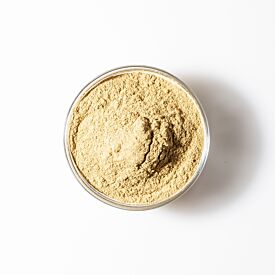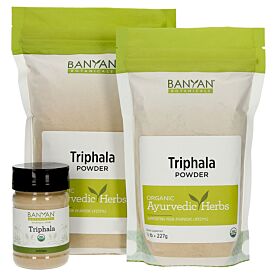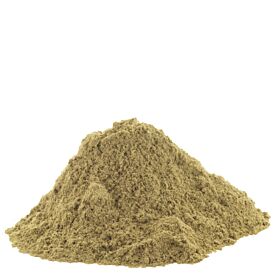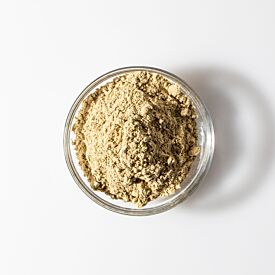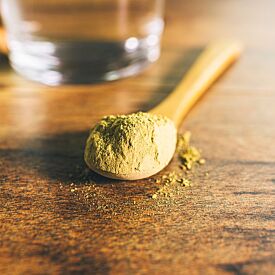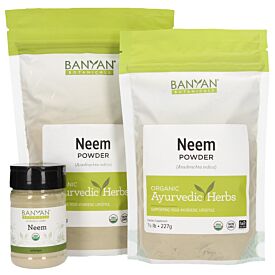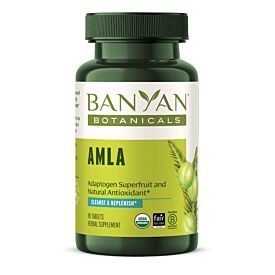Summer Guide
Light. Fire. Heat. Intensity. It’s summertime! Do you worship long days of bright sunlight? Do you welcome a renewed feeling of lightness and expansive consciousness?
Maybe you just can’t get enough of the hot summer temperatures. Or do you dread the heat and go out of your way to avoid the summer sun?
In this article:
- Summer: The Pitta Season
- General Tips for Pitta Season
- Pitta Season Diet
- Pitta Season Lifestyle Choices
- Herbal Support for Pitta Season
Summer, like each of the seasons, arrives with its own distinct personality. Depending on your constitution, summer may increase your internal sense of harmony, or it may aggravate one of your innate tendencies.
For example, a hot-natured individual who prefers a cool climate may love the winter but will feel hotter than most—to the point of discomfort—as the heat of summer intensifies.
On the other hand, someone who never seems to be able to stay warm in the winter months will experience exactly the opposite: long, cold winters will be a challenge, and this person will relish the heat of summer. But the seasons need not be an intrinsic source of fluctuating dread and euphoria.
We can support an improved state of balance throughout the year by making a conscious effort to live in harmony with the cycles of nature and by regularly adjusting our lifestyle and habits to accommodate the arrival of each new season.
While this idea may at first seem daunting, many people find that the recommended seasonal adjustments come quite naturally and that a few simple changes can dramatically increase health and vitality.
In Ayurveda, it is said that like increases like and that opposites balance; this helps explain why summertime stirs something different in each of us. If you know your constitution, you can actually take even more personalized steps to harmonize your internal landscape with the changing nature of the seasons.
If you are unsure of your Ayurvedic body type, take our dosha quiz to help you determine your constitution.
Summer: The Pitta Season
The most striking characteristics of summer—the heat, the long days of bright sun, the sharp intensity, and the transformative nature of the season—are directly in line with pitta dosha, which is why summer is considered a pitta season.
And, despite the fact that some climates are exceptionally humid this time of year, the cumulative effect of intense heat is to dry things out, so summer is also considered dry. 1 On a more subtle level, summer is a time of expansion and mobility—traits more characteristic of vata dosha.
While there is plenty to celebrate about summer’s unique personality, it’s possible to have too much of a good thing.
A summer seasonal routine is aimed at fostering diet and lifestyle habits that will help prevent the over-accumulation of summer qualities and allow you to enjoy the unique gifts that summertime has to offer.
General Recommendations for Pitta Season
Your primary focus through the summer months will be to keep pitta balanced by staying cool, mellowing intensity with relaxation, and grounding your energy. It may also be helpful to learn to recognize early signs of pitta imbalance so that you can take steps to address those quickly, if they arise.
But summer has some distinctly vata characteristics as well, so you’ll also want to stay hydrated, foster stability, and balance vata’s natural expansiveness and mobility with quiet, restful activities.
The following recommendations for pitta are appropriate for most people during the summer.
For additional considerations specific to your constitution, see the sections addressing each of the seven Ayurvedic body types below.
Pitta Season Diet
During the summer, our bodies naturally crave light foods and small meals that are easy to digest because the agni (the digestive fire)—a strong source of internal heat—disperses in order to help keep us cool. 2 Being fully present with your meals while savoring the flavor and texture of your food will help minimize the risk of overeating.
Summer is a time to favor the sweet, bitter, and astringent tastes and to relish in cool, liquid, even slightly oily foods. 3 This is the best time of year to enjoy fresh fruits and salads. It is also a great time to indulge in sweet dairy products such as milk, butter, ghee, cottage cheese, fresh homemade yogurt, and even ice cream on occasion. 4
All unrefined sweeteners except honey and molasses are cooling and can be enjoyed in moderation during the summer months. 5
In the way of beverages to beat the heat, enjoy cool or room temperature water infused with mint or lime and a little raw sugar, a sweet lassi, cooling herbal teas such as peppermint, licorice, fennel or rose, or an occasional beer. Iced drinks are best avoided; they disturb the digestive fire and create toxins in the body. 6
Go easy on sour or unripe fruits, aged cheeses, and heating vegetables and spices such as carrots, beets, radishes, onions, garlic, ginger, and mustard seeds. Try to avoid extremely spicy foods like chilies or cayenne pepper altogether.
Also, keep in mind that raw vegetables (as in salads) will be better digested if they are eaten at lunch, rather than at dinner. 7
Below is a list of some excellent summer foods:8
Fruits to Favor
|
|
Vegetables to Favor
|
|
Grains to Favor
|
Legumes to Favor
|
|
Oils to Favor
|
|
|
Spices and Garnishes to Favor
|
Animal Products to Favor (If You Eat Them)
|
Sweeteners
|
Pitta Season Lifestyle Choices
Summertime is bursting with vibrant energy, and most people find it easier to rise early in the morning at this time of year. This is a natural and beneficial rhythm to embrace. Early morning is also the best time for exercise.
- Before you bathe, massage the skin with a light coating of a pitta-soothing oil, like Coconut Oil, Sunflower Oil, or Pitta Massage Oil, to calm the nervous system and cool the body. 9
- Essential oils of jasmine and khus are good fragrances for the summer, or you may enjoy a rosewater spritz to calm, cool, and refresh your mind. 10, 11
- Dressing in light, breathable clothing made of cotton or silk and favoring cooling colors like whites, grays, blues, purples, and greens will help you counter the intensity and heat.
- Summer is ideal for spending time in nature, but when you do go outside, wear a wide-brimmed hat and sunglasses to shelter yourself from the intense sun.
- On especially hot days, there is often an afternoon lull in energy, and you may find that a short nap is beneficial. 12
- In the evening before bed, wash and dry the feet and massage them with a light coating of Brahmi Oil to ground your energy and draw the heat down.
- It is best to retire by 10 p.m. or 11 p.m. to avoid an overly stimulated mind,13 and lying on your right side will activate the lunar pathway in the left nostril, which is calming and cooling.
- Also, be aware that sexual activity, in excess, can provoke pitta and deplete energy, so cultivate moderation in this aspect of your life during the summer months. 14
Pitta Season Exercise
Summer can motivate improved physical fitness, and it is generally a great season to be active, provided you exercise at appropriate times and at an appropriate intensity.
Exercise is very heating and, at this time of year, is best avoided during the heat of the day, especially from 10 a.m.–2 p.m. Instead, try exercising early in the morning, when the atmosphere is crisp and cool.
It’s also important not to push too hard. Ideally, exercise at about 50–70 percent of your capacity, breathing through your nose the entire time, if you can.
Follow your workout with a drop of rose oil to the third eye, throat, and navel to help the body cool down. 15

Pitta Season Yoga
Pitta is fiery and intense; you can balance the pitta season by simply adjusting your yoga practice to calm pitta’s tendencies. Allow your routine to be guided by relaxed effort: move gently, fluidly, and gracefully, keeping the gaze soft and the breath stable.
Check yourself frequently to ensure that you’re not straining in your practice. Focus on creating a sense of groundedness and flow rather than becoming static in the poses.
Since the solar plexus tends to hold heat, favor asanas that massage, strengthen, and wring out the abdominal region such as:
Cooling, self-referencing poses and gentle flows are also very beneficial during the pitta season, such as:
Always close your practice with a few minutes in Savasana (Corpse Pose) to ground your energy and integrate the benefits of practicing yoga.
visit our resource on pitta-pacifying yoga.
Herbal Support for Pitta Season
There are numerous herbs that support the healthy function of pitta that can be especially beneficial during the summer season. Among them are:
Many of our herbal formulations also provide support for pitta, including:


